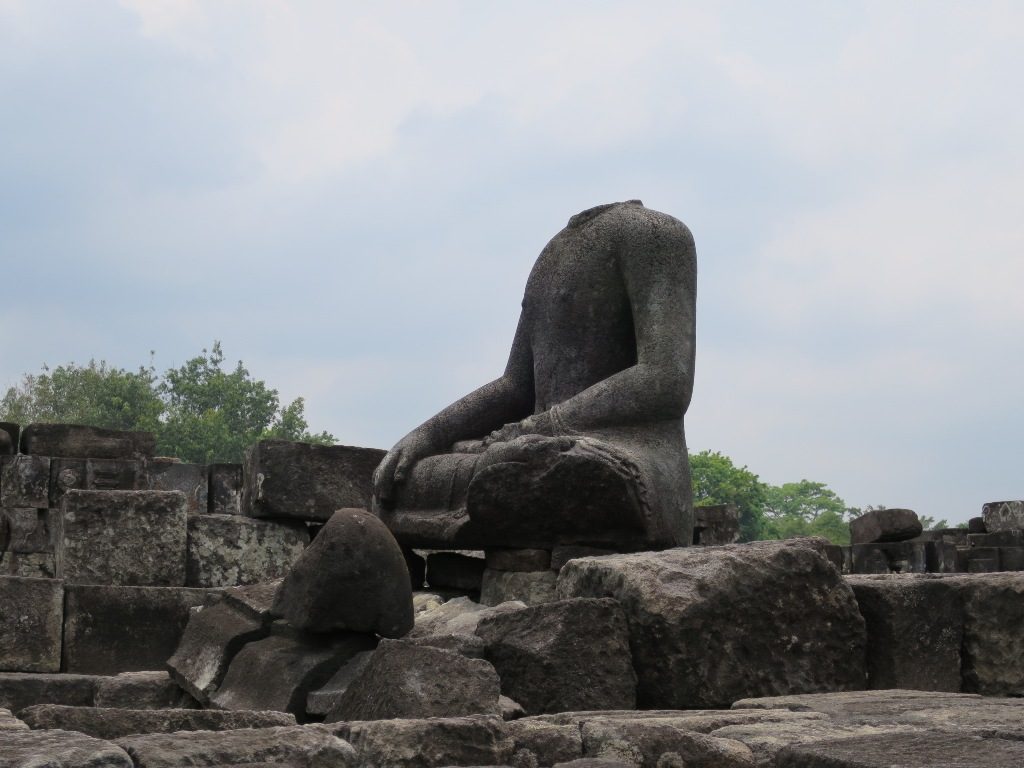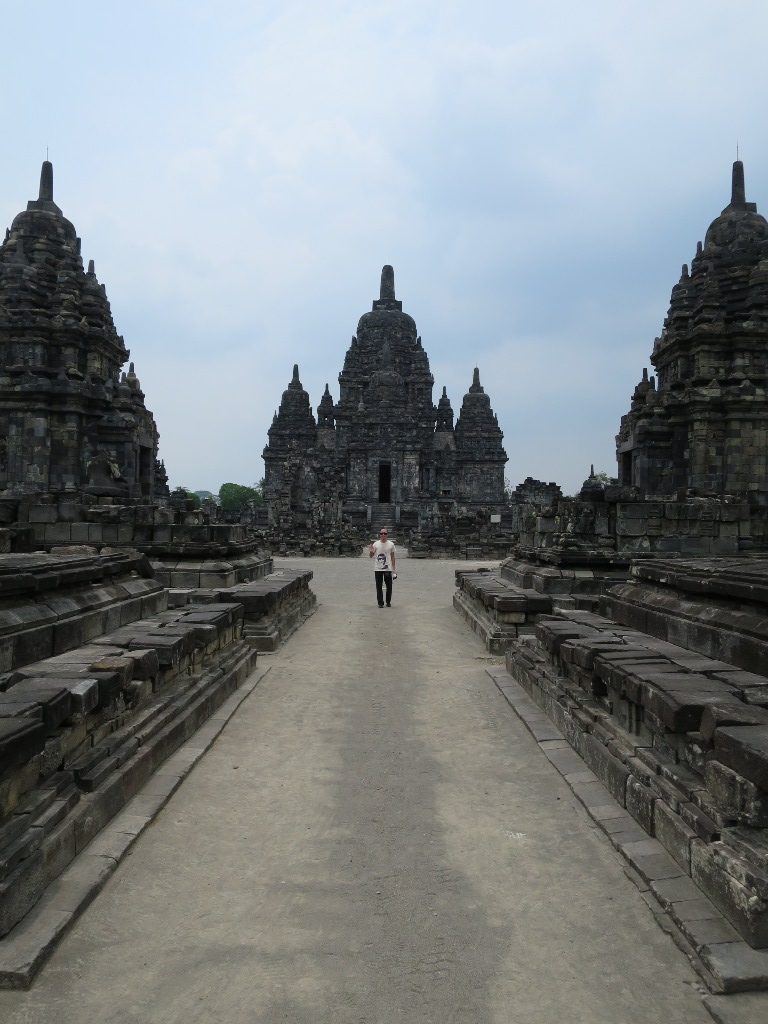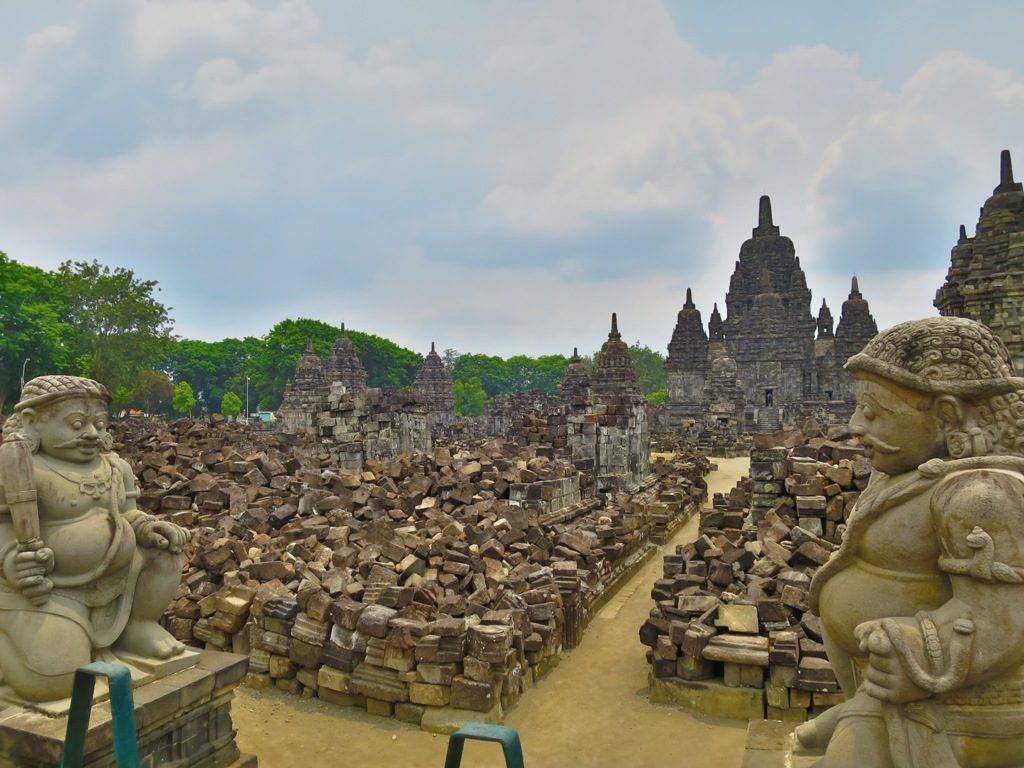Candi Sewu: Prambanan’s Forgotten Neighbour
The well-travelled among us would probably recognise that Borobudur, near Yogyakarta, Indonesia, is the world’s biggest Buddhist temple complex. They may not realise that the second-largest one, Candi Sewu, is also within spitting distance of the city’s airport. Best of all, it’s a mere 15-minute stroll from Prambanan; you can visit both on the same admission ticket.
Even though Prambanan is a Hindu site, Sewu has stood alongside it for hundreds of years. Rival worshippers didn’t rip each other’s sanctuaries apart (thankfully). Instead, earthquakes and souvenir hunters were what reduced both sites to rubble, before UNESCO elevated Prambanan to the status of a World Heritage Site.
Despite its proximity to such a storied Indonesian attraction, Sewu sees far fewer visitors. It’s not terribly pretty to look at from most angles, and there aren’t any ballet performances in front of it, but it’s no less significant in the local culture than its famous neighbour.
Background of Candi Sewu
Local legend links Sewu with Prambanan and a nearby volcanic crater lake. It also explains how Candi Sewu (which translates as ‘a thousand temples’ in Javanese) got its name even though the site features only 249 shrines. While the lore ignores the fact that Sewu predates both Borobudur and Prambanan by a few decades, who doesn’t love a good story?
There were once two neighbouring empires in Java. Bandung Bondowoso, a prince from Pengging, was smitten with Lara Jonggrang, a princess of the Boko empire. After conquering Boko, the prince asked for Lara Jonggrang’s hand in marriage. There was a problem, though – he had killed her father in battle. She thus set the insistent prince two conditions: build a well (the crater lake Sumur Jalatunda) and one thousand temples in one night.
Prince Bandung finished the well easily using his supernatural abilities. Goodness knows why he had more difficulty escaping the well after Lara Jonggrang buried him alive in it. Any other man would’ve been deterred from marrying her at this point, but the prince proceeded to start work on the temples. He summoned an army of demons, which swiftly finished 999 of them. As they worked on the last temple, the princess’s handmaids lit a fire in the east and started their morning ritual of pounding rice. This caused the roosters to crow, tricking the demons into fleeing before they completed their work.
In fury, our lovestruck prince cursed the princess, turning her into stone. She was placed inside the last temple (the Shiva tower at Prambanan), where visitors continue to admire her today as the sculpture of Durga slaying the bull demon.
Visiting the site
Now that I’ve exhausted the information that you can find on Wikipedia, here’s what it’s like to visit Sewu.
Typically, one would walk to Sewu from the south after exploring Prambanan (and returning the sarong that the groundskeepers make foreigners wear). The path takes people past two other Buddhist ruins, Candi Bubrah and Lumbung. It then follows the western side of the fence that surrounds the Sewu compound.
The site looks a right mess after what earthquakes and 19th Century village builders have done to it (they didn’t dare to approach the place before the European colonialists broke the taboo). Decapitated Buddha sculptures sit exposed to the elements while their heads decorate manors around the world. It took decades to restore the main shrine that towers over the rubble. If it wasn’t a sin to do so, I would’ve summoned Prince Bandung’s demons to help out.

However, many of the structures have been rebuilt on the eastern side. A gap in the gate lets visitors walk through the ancient courtyard, passing one layer of shrines after another. It’s like Borobudur, but without the steep steps or the reliefs. Bell-shaped stupas of various sizes top each tower. The lack of bas-reliefs at the site means that one won’t be spending hours reading into miles of friezes.
The main sanctuary at the centre of the complex consists of four rooms surrounding a central hall at each cardinal point. Every room probably once contained a sculpture of a boddhisatva (enlightened beings who delay nirvana to help other people); all of them are now empty. I was glad for that, however; there were a few wasps hovering around the entrances.
I’m not going to pretend that missing out on Sewu will break your visit to Yogyakarta – it won’t. However, since it costs nothing extra to see it (other than a few calories from the walk), it’s worth a look, especially as it’s aesthetically different from Prambanan and Borobudur, and less crowded to boot.
While you’re at it, see the other ancient Buddhist shrines around Borobudur – Mendut and Pawon
Getting there
Bus 1A gets you to Prambanan from the Adisucipto airport in about 20 minutes (3,000 rupiah). From the bus stop, follow the main road east to get to the entrance. Admission costs 220,000 rupiah for foreigners. If you just arrived or are about to catch a flight, you can leave your luggage at the bag drop. After exploring the Prambanan complex, go to the exit on the north side and follow the signs to Sewu – give yourself three hours to explore both sites.
Feeling peckish? Head to a lesehan in Yogyakarta for a meal

